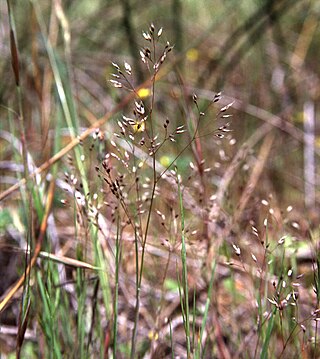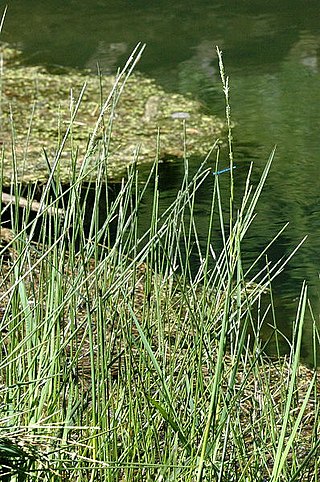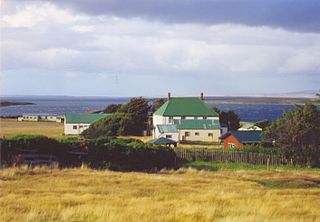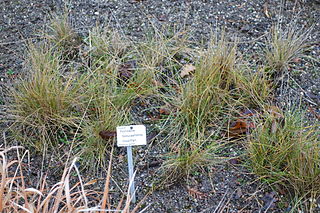| Molinia | |
|---|---|
 | |
| Molinia caerulea (right) [1] | |
| Scientific classification | |
| Kingdom: | Plantae |
| Clade: | Tracheophytes |
| Clade: | Angiosperms |
| Clade: | Monocots |
| Clade: | Commelinids |
| Order: | Poales |
| Family: | Poaceae |
| Subfamily: | Arundinoideae |
| Tribe: | Molinieae |
| Subtribe: | Moliniinae |
| Genus: | Molinia Schrank |
| Type species | |
| Molinia varia | |
| Synonyms [3] | |
| |
Molinia, or moor grass, is a genus of two species of flowering plants in the grass family, native to damp moorland in Eurasia and northern Africa. [4] They are both herbaceous perennial grasses. [5] [6] [7]
The genus is named after Juan Ignacio Molina, a 19th-century Chilean naturalist. [8]
- Species [3] [9]
- Molinia caerulea (L.) Moench - (purple moor grass) - Eurasia + northern Africa from Ireland + Morocco to Ethiopia + Kazakhstan; naturalized in parts of United States + Canada
- Molinia japonica Hack. (Japanese moor grass) - Japan, Korea, Anhui, Zhejiang, Sakhalin, Kuril
- formerly included [3]
see Arctophila Catabrosa Cleistogenes Diarrhena Disakisperma Festuca Glyceria Poa Puccinellia
- Molinia aquatica - Catabrosa aquatica
- Molinia distans - Puccinellia distans
- Molinia distans var. reptans - Puccinellia maritima
- Molinia fauriei - Diarrhena fauriei
- Molinia fluitans - Glyceria fluitans
- Molinia maritima - Puccinellia maritima
- Molinia maxima - Glyceria maxima
- Molinia olgae - Festuca olgae
- Molinia pendulina - Arctophila fulva
- Molinia plicata - Glyceria fluitans
- Molinia remota - Poa remota
- Molinia retusa - Disakisperma dubium
- Molinia serotina - Cleistogenes serotina
- Molinia spiculosa - Glyceria spiculosa
- Molinia squarrosa - Cleistogenes squarrosa









